Craft beers and cider may be a fast-changing category, but it’s worth doing the leg work to ensure you cash in on its growing following
The new generation of drinkers are more sophisticated in their beer and cider selections than previous generations, and that’s creating a boom in the craft beer category (+61.4% Nielsen 24 March 2018). Yet only two in three c-store retailers stock craft beer, with most of those who shun the category saying they don’t think their shoppers are interested (HIM 2017). They could well be missing a trick.
Patrick Isard, a brewer for Guinness, explains how shoppers’ interest in high quality drinks has led to the explosion in craft. “Some people just see ‘craft’ as a blanket term for ‘high quality’. For everyone involved in the beer market, craft has been a great thing. Craft drinkers want to try new things and try new flavours. They want something with a bit more character and something a bit more interesting.”
Jerry Tweney, owner of Prestbury Village Stores in Cheltenham, has definitely witnessed this increased preference for premium options.
“Nearly 20% of our business is in BWS now and we are needing to bring in a larger range of premium options and local beers and ciders to keep up with demand. The niche and craft stuff is going really, really well,” he asserts.
Katie Hunter, innovation manager for Guinness, adds that this is all part of a wide evolution in shoppers’ tastes. “Some 10 to 15 years ago the beer market was all about beers as refreshment,” explains Katie. “There were probably five key brands and all were about the 4% abv mark. That was around the same era of the alcopop. It’s interesting how much our tastes have changed.
“It’s the same with coffee; if we think about the way we would drink coffee 15 years ago in comparison with all the different beans and coffee styles you can get these days. People are so much more conscious of what they are putting in their bodies these days and they also want to be seen to be consuming drinks which are high quality and interesting.”
Providing a strong craft ale range should appeal to a younger audience of drinkers – the future generation of shoppers, according to the manufacturers.
“The revival of the craft movement has been enjoyed primarily by millennials,” says David Sheppy, Sheppy’s Master of Cider. “They are demanding ‘proper’ cider, produced by true experts. People care about what goes into their drinks – and how they are made. Some 49% of cider drinkers list ‘made by a skilled brewer’ in their top two factors when choosing a cider – and 44% of cider drinkers are interested in the heritage of their chosen cider brand (Mintel 2017).”
Lucy Cottrell, brand manager at Crabbie’s, agrees that millennials have driven much of the innovation in this sector.
She says: “While the category is still dominated by males aged 18-34 (Nielsen Homescan w/e 24 March 2018) the flavour innovation that has really driven the category’s growth has encouraged a lot of females in, particularly millennials, and they now make up a considerable amount of the market.”
That’s the good news. The bad news is that the huge scale of options in this evolving category does mean that retailers need to learn about a lot of new and niche brands, and keep up with which are trending.
Dave Hiscutt, store manager of Londis Weymouth, Dorset, has become something of a craft connoisseur in order to offer shoppers the most interesting and on-trend drinks in the category, and his efforts have been paying off as people are travelling for miles to get a taste of his range. After introducing his craft beer range, bottled beer sales rose 96% to £28,500 in 2016, followed by 5% in 2017 year on year.
“We’ve been developing it over six years. We were getting the wrong people in, so we delisted super-strength. We asked ourselves what we could do to bring in the right customers,” he explains.
“I follow the UK Craft Beer Forum on Facebook and this is divided into different regions. This allows me to keep up to date on what’s new on the market and what people are getting excited about locally. This allows me to stay ahead of the emerging trends and stock products that can’t be found anywhere else in the area.”
Dave adds that another good thing about the forum is that a lot of potential customers follow them, too, so it’s a great way to engage with and draw in new clientele.
“I will sometimes stick a cheeky post on there saying ‘hey, look what I’ve just got in store’ and people will come to my store especially to get that product. I did it once and a guy messaged me to ask how long I stayed open for and he turned up after having driven for an hour-and-a-half. He and his mate each bought £80- or £90-worth of stock and then headed back home!”
Fresh face for Badger Beers
Hall & Woodhouse’s Badger Beer is unveiling a new brand identity across its range of products, marking one of its biggest branding changes in its 240-year history.
The company is injecting £1.25m into the rebrand, which includes a new brand logo and packaging identity, new integrated marketing communications spanning digital, social and print, on- and off-trade activation and a new website, www.badgerbeers.com.
The changes are designed to better reflect the family-owned company’s Dorset heritage and expertise in crafting beer.
The six-strong range comprises The Legendary Tangle Foot; Fursty Ferret; Golden Champion; Hopping Hare; The Cranborne Poacher; and The Blandford Fly. All the beers are available in 500ml glass bottles. Tangle Foot and Fursty Ferret are also available in 500ml cans.
The revamped packaging features a new Badger logo, and bottles carry an embossed established date of 1777.
Hall & Woodhouse managing director Anthony Woodhouse says: “The marketplace has moved on at pace in the past few years and it was time to update our brand, making it more contemporary and relevant to the evolving beer consumer. Our range of crafted beers appeal to many different tastes, drinking occasions and seasons, and we needed to reflect this in our brand and packaging.”
Flavours
One of the difficulties with stocking a very wide range of products and trying everything new to the market is sheer lack of space. But Dave manages this issue by using a supplier who allows him to pick and choose his beers without minimum orders.
“I buy from Beer Paradise in Leeds, which lets us order in very small quantities so we can just get five bottles of each variety. This is important with craft ale as these shoppers won’t buy like other beer shoppers. They will buy one of each sku as they want to try as many different flavours as possible.
“So this also makes it a very challenging category as you have to make sure you always have something new on the shelves to keep customers coming back.”
When it comes to deciding which skus to stock, Dave has learnt which brewers are the safe bets and will always try to stock their npd.
“Certain breweries are known for being particularly good. Some popular ones at the moment are Northern Monk, Cloudwater, Wild Beer, Omnipollo and Dark Star.”
Jay Patel, manager of Ancoats General Store (Simply Fresh), in Manchester, says that when it comes to craft, shoppers buy it like pick ‘n’ mix, so it’s always hard to pin down one best seller over a period of time. “Our craft is really popular, but I couldn’t pick out one strongest seller as it’s the kind of range that people buy into like it’s a hobby; they like to buy one of everything, like collectors.”
Dave agrees and says as people are always looking for something totally new, it tends to be the more bizarre flavours that do well.
“Dark Star does a Crème Brûlée beer every Christmas and this always sells really well. Some other popular varieties I remember are the Coconuts Rum stout from our local brewery Cerne Abbas, the Wild Beer Co Millionaire chocolate & salted caramel milk stout, and the Wild Beer Co Wildebeest espresso, chocolate & vanilla stout. There was also a popular Caribbean cocktail beer which was quite fruity. Basically, any that have a unique and interesting flavour will usually be popular.”
Local breweries can be a good place to start when looking to expand your craft range. Sandeep Bains of Simply Fresh, Faversham, in Kent, says he’s expanded his range in the past six months and stocks ales from five local breweries. He says people like that they are local and of higher quality, so it’s like hitting two birds with one stone.
Jerry has found that local is where it’s at in his shoppers’ eyes. “We’ve got beers from five Cheltenham breweries and we’re being told by customers to make sure we keep stocking them as they’re products that can’t be found in Tesco and Sainsbury’s.”
Isard reports that ‘hoppy’ beers are particularly popular at the moment. These can taste fruitier, more citrusy and can be a bit sweeter. He imagines these are more popular simply because they are a little more “sessionable” (easy-drinking) than others.
Make meal deals more appealing with beer and cider pairings
When it comes to beer and cider, 43% of large single bottles are being purchased as an accompaniment to meals and snacks (InSites Consulting/Heineken Category Image Study 2017), thanks to the 18- to 24-year-olds who are increasingly choosing to drink beer and cider with their meals instead of wine.
Heineken advises retailers to take this opportunity further than simply offering beer and pizza. It suggests trying to merchandise more formal options to capture date night opportunities, or merchandise zero-alcohol beer with healthier choices to capture those in the health-conscious market.
Category and shopper marketing director Toby Lancaster says: “Beer can taste better with certain foods than wine does. A stout with cheese tastes better than red wine with cheese.
“We aren’t saying to retailers that they should take wine out of their meal offer, but they can add beer as another option.”
The company suggests these pairings:
Birra Moretti: Pizza
Amstel: Thai red curry or chicken salad
Maltsmiths IPA: Burrito with refried beans and guacamole
Old Mout Summer Berries: Sea bass with beetroot salad, blue cheese
Strongbow: Pork belly with crackling
Strongbow Dark Fruit: Venison casserole, apple & blackberry crumble with custard.
Design
Dave adds that while flavour is very much front of mind for craft enthusiasts, the bottle/can design also has a huge influence.
“A lot of the time people will just choose these beers based on their name and their packaging.
“Sometimes the breweries will collaborate with each other for different brewing projects. They collaborated a while ago and each was assigned a colour of the rainbow and they had to create a beer for that colour. Omnipollo was given the colour yellow and they created a beer called Yellow Belly, and it was packaged to look like a member of the KKK. Their reasoning was that the colour yellow symbolised cowardice and they thought the KKK was the most cowardly group they could think of.
“It was funny because they knew they were almost making themselves look bad by creating a beer that looked like that, but their target audience appreciated that humour and loved the idea.”
Luke Knight, assistant manager of a Beer Guerrilla craft ale shop in Northampton, who also designs illustrations for craft beer brands, says the craft beer revolution has also created a revolution in design. “You can have the best craft beer in the world, but you have to get people’s attention, or nobody’s going to buy it,” says Luke.
“You just need to look at all the label and can designs in the shop to see that artwork and branding is seen by the industry as equally important as the actual product.”
Sheppy points out that cans are an ideal format for convenience stores to stock as they are an on-the-go format as you don’t need a bottle opener and they’re lighter to carry.
Dave says cans have become a more trendy way to buy craft beers of late. “People seem to have become aware that beer can become light damaged and that the can is the most controlled environment for it to be transported in. Cans are also much easier to drink on the go.”
London micro brewery launches eight craft beers
Gorgeous Brewery, a new, independent, family run artisan brewery, based at The Bull pub in Highgate, has launched a new range of eight expertly crafted beers with a unique focus on quality and taste.
Meeting increasing demand for craft beer from small batch breweries , the Gorgeous Brewery range is available for sale to retailers & on-trade buyers.
The new line includes a selection of thirst quenching, light bodied pale ales, a dark and rich vanilla malt stout and seasonal IPAs. Seven of the beers, including Glowfly, Greaseball and Goofyhoof are vegan, unfined and unfiltered.
All of the beers are brewed onsite and bottled and labelled by hand. a minimum order of 24 330ml bottles of the Gunpowder flavour, prices starts from £33.00.
Founder Rob Laub says: “We want to meet the increasing demand for good quality beer from small batch breweries, which are being made available for everyone across the country.
We have designed the beers to ensure that the range encompasses something for every beer drinker and for every occasion, based on what we would enjoy drinking.”
Gorgeous Brewery’s range consists of eight beers: Glowfly, Gunpower, Geekhunter, Greaseball, Gryocropter, Goofhoof, Greedyguts and Gravedigger.
For further stockist and pricing information, visit: www.gorgeousbrewery.com
Gateway beers
While some retailers, like Dave, are benefiting from offering a wide choice thanks to their big following from craft enthusiasts, Guinness points out that one of the main barriers to purchasing craft beer and cider is confusion over the huge range. It argues that some retailers may find a smaller range more appropriate to their demographic.
To help shoppers get into the craft ale market, some big brewers have created ‘gateway beers’. This means drinkers won’t have to choose between the niche brands they’ve never heard of before.
One example is Heineken’s Maltsmiths brand, which recently received a new design in a bid to encourage consumers to trade up.
Penny Adair, PR consultant at Thatchers, says growth in the convenience cider market means now is an ideal time to review your range. “Look carefully at what’s in demand, and what your customers will be asking for this summer,” she says.
She says both Thatchers Vintage and Thatchers Katy are in growth.
Price
Crabbie’s Cottrell says that craft beer drinkers are willing to spend that little bit more for the provenance and authenticity they’re buying in to. She adds: “With craft beer tending to be consumed in moderation, consumers are willing to pay more for quality, so basket deals such as ‘three for £5’ work well in driving weight of purchase in the convenience sector.”
But if your shoppers are yet to consider themselves as ‘craft beer drinkers’ then you may need to provide lower-cost options. Guinness research has shown that purchase barriers include concern about value for money and quality. The brand says one-third of beer drinkers see craft beer as over-priced, a fair concern considering a craft sku costs about 27% more than a standard sku.
Retailers could remove this barrier by sampling the products and allowing shoppers to confirm they are getting good value for money before buying.
Heineken’s Toby Lancaster advises that retailers can encourage shoppers to trade up by giving the impression of added value. He says one simple way to do this is by making sure to chill the products, or by offering free pint glasses with more premium products.
Sandeep keeps his customers happy by ensuring he undercuts his local competition with a multi-buy option. “We offer ‘three for £6’, which is cheaper than other shops in the area.”
So even if your shoppers are unlikely to become craft connoisseurs, it’s worth making space for some of the craft ales and ciders out there, even if it’s just a few gateway brands. If these show potential then get onto social media to keep up with what’s new and you could tap into a whole new audience.

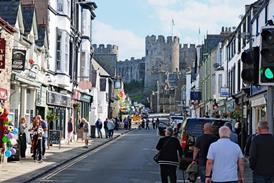
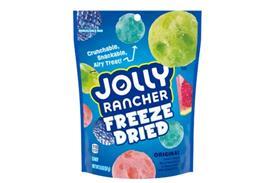
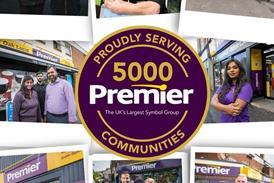

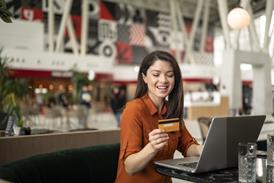



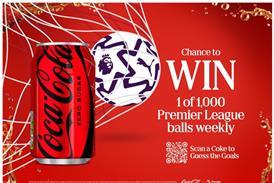
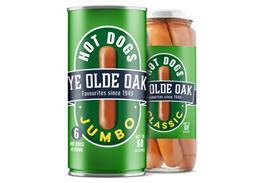
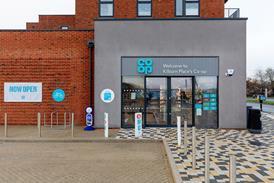










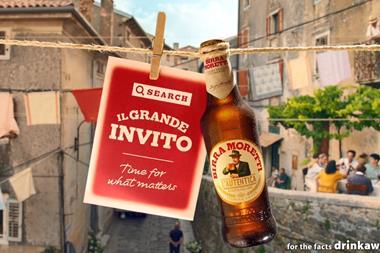

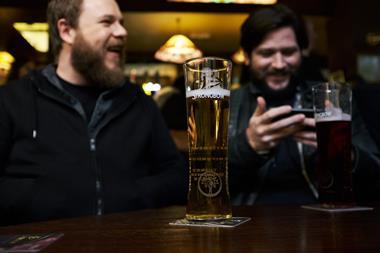







No comments yet